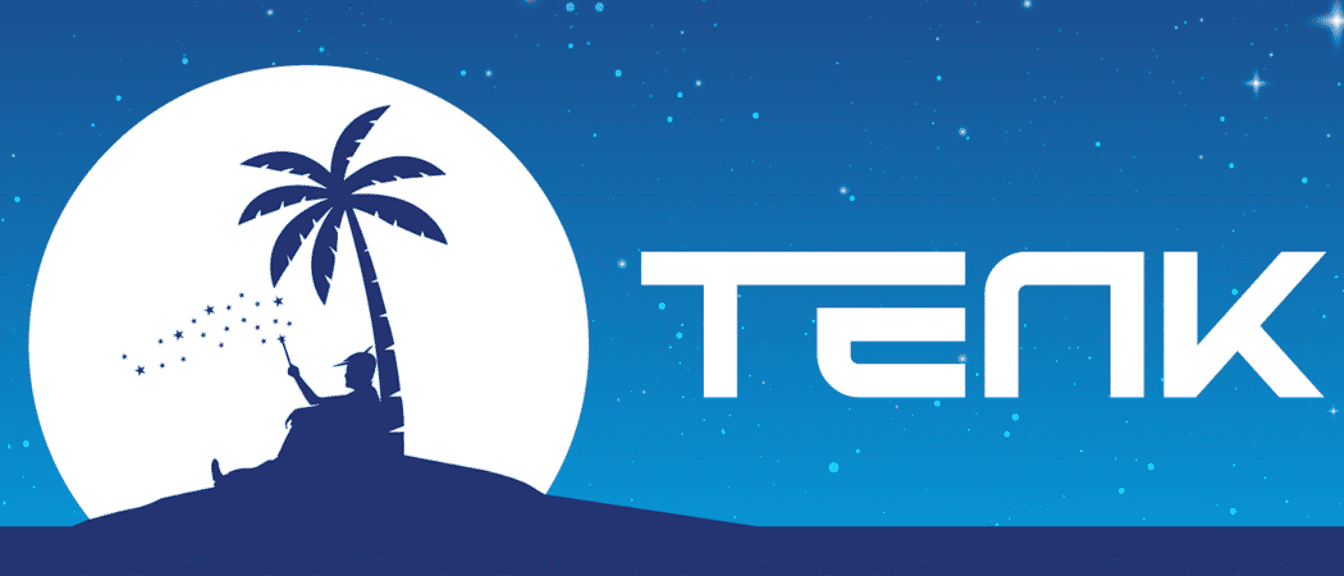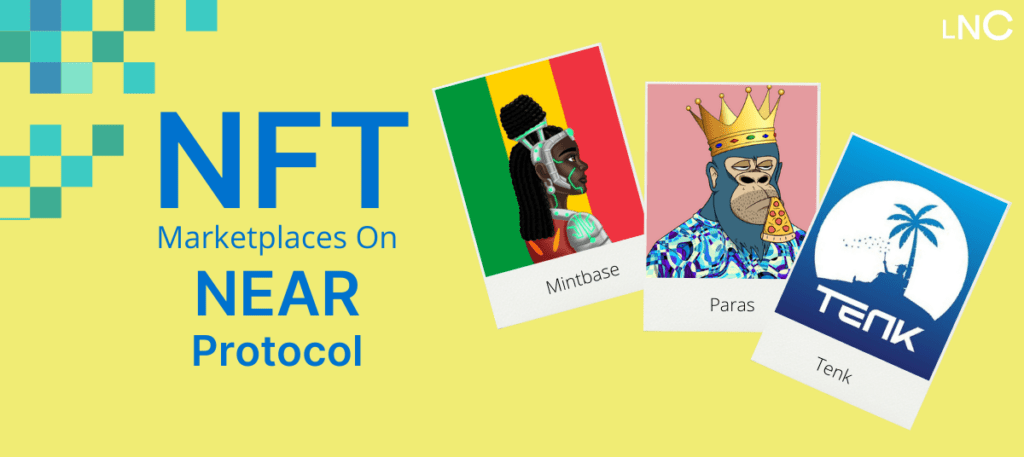With the growth of blockchain technology, we have seen several new use cases that are driving blockchain adoption, helping it move into the mainstream. In 2021, we saw the rise of NFTs as a new use case of blockchain technology. NFTs caught the eye of the blockchain space resulting in their soaring popularity as users scrambled to get their hands on them. A measure of their popularity can be gauged by the sale of an NFT art collection by Beeple that sold for a staggering $69 million.
With the staggering success of NFTs, we have seen several artists, musicians, and other creators dive into NFTs. We have seen artists such as Grimes and bands such as The Rolling Stones and Kings of Leon hop on to the NFT bandwagon by selling tokenized versions of their songs, album art, and digital and virtual merchandise. With so much attention on them, NFTs are a hot topic, and it is essential to understand them and how you can buy or sell them through an NFT marketplace such as the NEAR NFT marketplace. But first, we must understand the definition of an NFT.
What Is An NFT?
An NFT can be described as unique digital assets that have their identifying information stored on smart contracts. This is the information that makes each NFT unique. Because each NFT is unique, they cannot be exchanged with one another like fungible items such as fiat currency or even BTC. NFTs are also indivisible, unlike fungible items, which can be divided into smaller assets or amounts and then sent to others. For example, you cannot sell half a painting or half a train ticket to anyone. The same logic applies to an NFT, with each unique NFT containing a unique set of data that cannot be divided or traded.
NFTs are based on two types of token standards on the Ethereum blockchain, the ERC-721 token standard and the ERC-1155 token standard. Both token standards ensure that the asset in question will act in a certain way, allowing developers to easily deploy their NFTs using these token standards while also ensuring compatibility with services and the crypto ecosystem. However, several other blockchains such as EOS, NEAR, and Tron have now released their own token standards to attract developers and create NFTs on their platforms.
History Of NFTs
We’ve already discussed what an NFT is above. However, where did NFTs originate from? The first minted NFT can be traced to 2014, when Kevin McCoy minted the first NFT titled “Quantum” on 3rd May 2014, much before the explosion of NFTs and the crypto art space. The Quantum NFT can be described as a pixelated image, consisting of an Octagon filled with circles, arcs, and other shapes. All the shapes share the same center, with the larger shapes surrounding the smaller ones.
Going deeper into history, NFTs were fueled by cultural phenomenons such as CryptoPunks and CryptoKitties. However, the history goes much further than just these. In 2012, we saw the emergence of “colored coins,” which can be credited with the idea of NFTs. These colored coins were initially issued on Bitcoin’s blockchain. Then in 2014, Counterparty emerged, created on the Bitcoin blockchain and allowing asset creation. In 2016 we saw the emergence of Rare Pepes and, shortly after that, CryptoPunks, which led to the NFT boom, thrusting NFTs into the mainstream and capturing the public’s imagination at large.
Which of the following is true about NFTs?
What Is An NFT Marketplace?
Just as you require a marketplace to purchase most items, both in the real and digital worlds, an NFT marketplace allows users to buy, sell, trade, display, or mint (create) their own NFTs. Think of an NFT marketplace as an eBay or an Amazon, but exclusively for NFTs. Pretty much anyone can use an NFT marketplace, but to access these marketplaces, a user requires the following
- A user account on the NFT marketplace that will allow you to purchase the NFT from a particular platform.
- A crypto wallet that is compatible with the blockchain that you intend to buy the NFTs on. For example, if you plan to use the Ethereum blockchain to buy or sell your NFTs, you will require a compatible wallet such as MetaMask. If you plan to use Solana, you would require a wallet compatible with Solana, such as Sollet.
NFT marketplaces are crucial because they bridge buyers and sellers and offer users a host of tools enabling them to create their own NFTs within minutes. Artists can use the marketplace to put up their NFTs for sale, and buyers can browse the marketplace, purchasing the item through a process of bidding.
Popular NFT Marketplaces
There are several NFT marketplaces that you can choose from depending on your requirements. Universal NFT markets are extremely popular, while other niche marketplaces exist for specific NFTs that could consist of collectible cards, virtual land digital worlds such as Decentraland, or even certain in-game items and collectibles. Some of the most popular NFT marketplaces are
- OpenSea
- SuperRare
- Rarible
- Mintable
- Nifty Gateway
How OpenSea’s Rise Fueled NFTs
OpenSea has established itself as the leader and is the largest NFT marketplace, hosting and providing support for all sorts of digital assets. The marketplace was initially used as a marketplace for the popular game, CryptoKitties. However, it has since expanded far beyond just collectibles and is a marketplace for various assets such as music, in-game assets, and collectibles, digital collectibles, art, etc. OpenSea is responsible for driving the growth of NFTs on NFTs and NFT projects such as CryptoKitties, CryptoPunks, Ethermon, and others, all of which were launched in 2017, the same year as OpenSea, which led to the marketplace leading the charge of NFTs into the mainstream.
Which are the token standards used for NFTs?
The NEAR Protocol
The NEAR Protocol was founded in 2018 and is a decentralized development platform that creates a perfect environment for smart contracts and decentralized applications. NEAR focuses on the shortcomings of other protocols in the same space, such as Ethereum, easily rivaling the capabilities of the number one platform for Decentralized Finance and Decentralized Applications. NEAR addresses one of Ethereum’s most glaring shortcomings, that of scalability. It does this through a process called “sharding.” Sharding allows the NEAR protocol to scale up exponentially.
NEAR uses a Proof-of-Stake blockchain that uses sharding and is developer-friendly. NEAR is low-cost and highly scalable, allowing developers to create decentralized applications easily. NEAR also introduces Doomslug, which allows blocks to achieve finality in mere seconds. The protocol uses the same technology as Bitcoin, combining it with other features such as sharding. The NEAR protocol scales linearly, allowing it to support billions of transactions in a decentralized manner.
NEAR also consists of several unique NFT platforms as more and more projects choose the NEAR protocol to launch their projects. NEAR’s collaboration with Ed Young saw the platform launch portraits of iconic figures from the history of hip-hop. NEAR’s Arterra platform allows fan engagement for influencers, sports teams, and streamers, allowing fans to collect NFTs from their favorite creators. Another project on NEAR is Pixelparty, consisting of 600 tokens, with each token a representation of a subframe of a Pixelparty Frame. Another project on NEAR is Metamon, which allows users to collect NFT-based monsters. Users can also combine two monsters, evolving them into more powerful and rarer NFTs.
NEAR allows users to access several protocols that range from DAOs, DeFi, and NFTs, with a vibrant ecosystem that has several projects up and running. Because our focus is on NFT marketplaces, we will look at NFT projects on the NEAR protocol, namely Paras, Mintbase, and TenK.
Mintbase

Source: NEAR
Created by Nate Geier and Caroline Wend in 2018, Mintbase allows users to create and sell NEAR NFTs. These NFTs could be anything ranging from crypto art to digital assets and everything in between. Anyone with access to the internet can create an NFT on Mintbase and sell it on the NEAR NFT marketplace or sell it on other marketplaces such as OpenSea or other marketplaces. Mintbase allows creators to smart contracts, limiting the transferability of tokens minted. This helps to reduce fraud or the illegal transfer of NFTs significantly.
Mintbase made the switch from Ethereum to NEAR thanks to the high gas fees on the former. Gas fees became so high that Mintbase had to ask users to wait for gas prices to drop before deploying a store. With significantly lower gas fees, NEAR was and continues to be the perfect platform for Mintbase. The protocol is able to achieve lower gas fees due to an efficient contract execution model. NEAR also uses a dynamic approach to sharding called Nightshade, giving it a considerable advantage over other platforms such as Ethereum.
Paras

Source: NEAR
Paras is a digital art card marketplace created on the NEAR protocol. The protocol is different from other marketplaces because it exclusively offers collections instead of single releases. Paras takes its inspiration from trading cards in the real world, with its NFTs similar to those of sports cards collections other trading cards of popular franchises such as Pokemon. Unlike other marketplaces, especially those on Ethereum that allows users to upload pretty much anything, Paras takes a more measured approach to NFTs.
To create on Paras, artists have to apply, with only 30 artists approved every week. Artwork created by the artists must comply with Paras’ aspect ratio of 64:89 while also containing specific information related to the artwork. Paras chose NEAR because it offered quick transaction speeds low transaction fees. Another major factor why Paras chose NEAR was because of the Rainbow Bridge, which enables the transfer of ETH to NEAR, allowing the seamless purchase of NFTs.
Recently, Paras launched Boom Boom, a mini-comic series exclusively created for the NEAR ecosystem. The protocol also launched its first comic, Paradigm, with the first three issues available for free, while subsequent releases will be priced at $0.3 NEAR per issue.
TenK

Source: Twitter
Mintbase and Paras are considered the more prominent NFT platforms available on the NEAR protocol. However, there is a third project available on NEAR, called TenK. TenK can be described as an open-source generative art platform that brings a host of NFT artwork to the NEAR protocol. The protocol is already launching several prominent projects on NEAR. TenK is the protocol behind NEAR Misfits, which launched in 2021. NEAR Misfits is the first cryptographically complete profile picture collection based on the NEAR protocol.
Closing Thoughts
The NEAR Protocol has made the minting of NFTs and NFT marketplaces far easier than Ethereum, allowing it to become one of the most promising and sought-after protocols in the crypto space. NEAR takes Ethereum head-on, providing solutions for long-standing issues such as a lack of scalability, slow transaction and processing speeds, and extremely high gas fees. NEAR has become a successful alternative to Ethereum, with new projects flocking to the protocol and others switching from Ethereum to NEAR. Other projects such as Paras and TenK already operate on NEAR.
What shortcomings of Ethereum does NEAR address?
Updated: October 16, 2024





Top comment
you informed us very well
Easy to qna thx near
Near itu bisa transaksi cepat coin atau nft